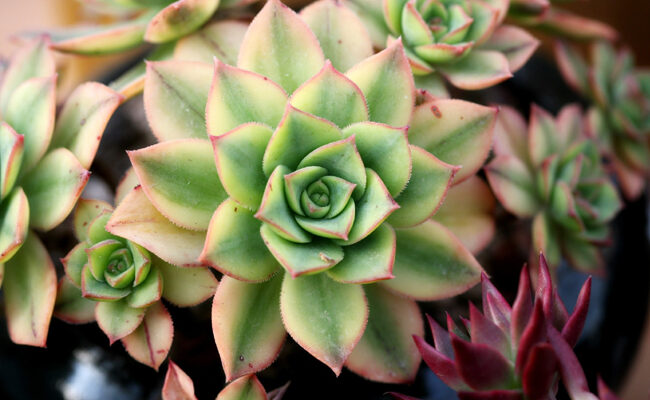
Are you ready to start your new life as a plant parent? It is a worthy pursuit because not only do plants look great, but they also offer lots of mental health benefits.
And lucky for you, there are lots of great beginners’ plants that will ease you into being a first-time flora father or mother.
But which houseplants are the best for nature newbies? Which need little light, little water, and are impossible to kill? Read on to find out the best plant babies to add to your brood first.
1. Succulents
Succulent plants are often found in dry, desert landscapes with poor water supply and non-ideal soil conditions. They make the perfect beginners’ plants because they need so little to survive.
In particular, aloe, echeveria, and tiger jaws succulent varieties make great houseplants.
Most succulents, including cacti, like to live in a bright room out of direct sunlight. They also need very little water, but check your plant’s specific cactus care guide to be sure. Only water them around once a month when their soil is bone dry and even less in the winter.
If you feel like you are neglecting your succulent, that is likely a good thing!
2. Snake Plants
Snake plants are also known as sansevieria, bowstring-hemp, or mother-in-law’s tongue. They are evergreen plants that thrive in undesirable conditions and are super hard to kill.
Not only that, but they have a striking design. And NASA did a study on clean air and recommended snake plants as a top purifying plant.
A snake plant’s ideal temperature is above 50°F, so keep them away from windows in the winter. Place them in indirect sunlight (like succulents) and do not water them more than every two weeks. You will find that easy plants need very little water.
3. Spider Plants
Both succulents and snake plants are not very leafy. If you want to care for plants that look a little more attractive, opt for spider plants. Spider plants can grow fast and they develop small offshoots and flowers on the end of their leaves, hence the name.
They need the exact same care as succulents and snake plants, which makes them easy beginners’ plants. Give spider plants bright, indirect sunlight and allow them to drain in between watering so they do not develop root rot.
Spider plants prefer cooler temperatures to succulents; around 55-65°F is ideal.
Because they can grow offshoots quite fast, you may want to prune them once they start growing out of control.
The leaves of spider plants are prone to turning brown, which is very normal. If this becomes a common occurrence, switch to filtered water or rainwater and make sure their water is draining.
Beginners’ Plants to Start Your Indoor Jungle
More and more people get value from surrounding themselves with plant life, but we all have to start somewhere. With these beginners’ plants, you will be able to join in the fun and learn more about looking after plants as you grow.
Want to read other articles about plants and gardens? Browse our website for more tips!
Leave a Reply